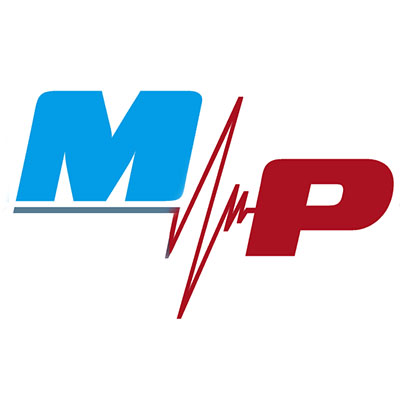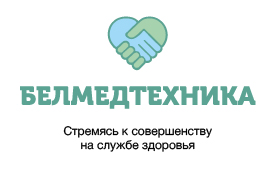Intensive care unit №1 (adult)
Anesthesiology, Intensive and Critical Care Department №1 was established in July 2005. Annually in the department receive qualified help about 1000 patients, including from countries near and far abroad (Ukraine, Turkmenistan, Russia, etc.), it carried out more than 2000 anesthesia cares in compliance with all safety anesthetic regulations.
Anesthesiology, Intensive and Critical Care Department №1 contains intensive and critical care wards with 12 neurosurgical beds and provide treatment and intensive care for adult neurological and neurosurgical patients before and after surgery, anesthesia in the operating rooms and diagnostic rooms. It contains 4 wards with 3 beds each, isolating ward and resuscitation room.
Henadz Rakots, doctor of the highest category, is the head of the Department, phone 263-33-20 (017), e-mail: rakots50@gmail.com

Pic. 1. Anesthesiology, Intensive and Critical Care Department №1
Staff of the department (pic. 2):
- Dovgalevich Julia Dmitrievna, anesthesiologist-intensivist, first category doctor
- Troyanovskiy Yevgeniy Sergeyevich, anesthesiologist-intensivist, first category doctor
- Zhuravskaja Tatjana Aleksandrovna, anesthesiologist-intensivist, first category doctor
- Kovalev Artem Leonydovich, anesthesiologist-intensivist, second category doctor
- Rybalko Sergey Sergeevich, anesthesiologist-intensivist, first category doctor
- Stelmach Nikolaj Aleksandrovich, anesthesiologist-intensivist, second category doctor
- Lobanovskaja Olga Nikolaevna, anesthesiologist-intensivist, second category doctor
- Lopatenko Anna Vitalyevna, anesthesiologist-intensivist, second category doctor
- Petrova Oksana Leonidovna, senior nurse of the department, first category nurse-anesthesist
In the Department work 36 nurses-anesthesists, who passed special trainings.

Pic. 2. Staff of the Anesthesiology, Intensive and Critical Care Department №1

Pic. 3. Operating Unit

Pic. 4. Anesthesia in the operating room

Pic. 5. Anesthesia in the operating room

Pic. 6. Anesthesia in the operating room
The Department provides anesthesia in 4 operating rooms in two shifts schedule, and also in CT and MRI rooms. The Department is equipped according to world standards. There’s the climate control system that allows regulation of temperature and humidity in the intensive care wards (pic. 7 & 8). Each bed (pic. 9 & 10) is equipped with comfortable console for medical equipment placement (high class artificial lung ventilation machine, syringe and infusion dosing devices, infusion heating system, vital signs monitor).
Functional bed is provided with decubitus ulcers prevention system and convective heating system. Resuscitation room equipment (pic.11) is comparable to operating room. Anesthesia machine, vital signs monitor, operating table and surgical lighting allow to do perform any surgical manipulation.

Pic. 7. Intensive care unit

Pic. 8. Intensive care unit

Pic. 9. Central haemodynamics monitor PICCO2
The department is equipped with all necessary equipment for events of intensive care and the provision of intensive care (pic.10) such as:
- modern respiratory support devices of high and extra-high classes
- apparatus for multifunctional renal replacement therapy
- system of monitoring and cerebral oximetry monitoring
- apparatus for intracranial pressure control
- central haemodynamics monitor PICCO2 (pic.9)
- high-precision equipment for dosing of medicines with heating of transfusion media
- enteral feeding pumps, convective heating systems, systems for prevention of pressure ulcers

Pic. 10. Intensive care unit

Pic. 11. Resuscitation room
It is possible to carry out general anesthesia (from mild medical sedation to endotracheal anesthesia) in an MRI room with 3 Tesla magnetic field, in compliance with all safety requirements of modern anesthesia (pic. 12 & 13).

Pic.12. Anesthesia-breathing apparatus in MRI room.

Pic. 13. Anesthesia-breathing apparatus adapted for using in magnetic field
On the base of the department carries out an extracorporeal methods of correction of homeostasis (efferent therapy). The main focus is on the different types of therapeutic plasmapheresis, one of the most effective methods of purification of the body, from the position of the efficiency, quality and safety. Availability of modern equipment of the German company «Fresenius Medical Care» and «Haemonetics», made in USA, provides not only high efficience, but high safety degree for the patient (pic. 14 & 15). On the base of the department conducted more than 2000 automatic sessions of plasmapheresis in patients with inflammatory and autoimmune disorders of the nervous system, such as myasthenia gravis, multiple sclerosis, acute and chronic inflammatory demyelinating polyneuropathy, etc.

Pic. 14. Apparatus for gravitational cytoplasmapheresis

Pic. 15. Apparatus for low-flow renal replacement therapy
Apparatus for therapeutic plasmapheresis used in our center:
- apparatus for cytoplasmapheresis «СОМ.ТЕС» Fresenius, Germany (pic. 14).
- apparatus for plasmopheresis «PCS» Haemonetics, USA
- apparatus for multifunctional renal replacement therapy «MultiFiltrate» Fresenius, Germany (pic. 15)



















